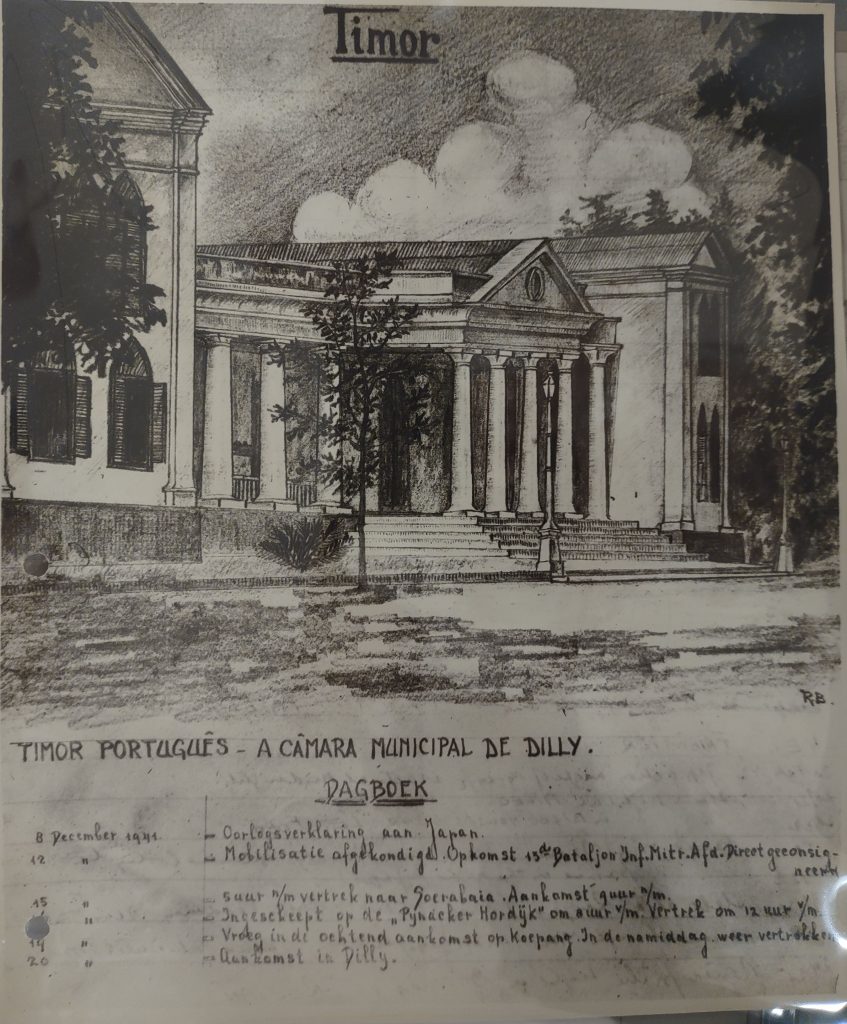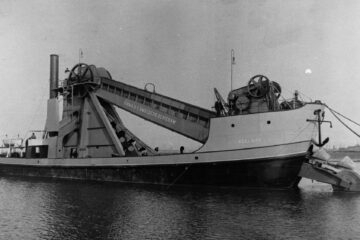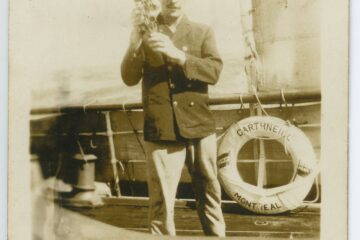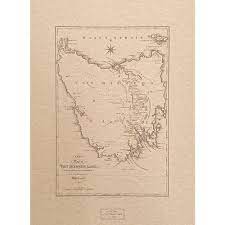By Gerard van Haren
Richard was born on January 3, 1913, in Probolinggo, situated on the island of Java. He held the position of a militia sergeant, bearing the title tkl (2nd class), and was identified by pedigree number 13613. On December 15, 1941, he received his assignment for the Timor-Dilly Expedition. He was a member of the machine gun company within the 13th Infantry Battalion from Malang. It’s worth noting that Richard did not belong to the three machine gun sections that were transferred to Koepang via troop transport aircraft on that same December day in 1941.
The specific role that Richard played within the expedition remains a question. Was he part of the 2 mortar sections or did he serve as a fusilier within a rifle section? Alternatively, might he have been involved as a rangefinder or gunsmith/gun repairer? It’s important to mention that these roles typically weren’t filled by militia soldiers.
Richard left behind an amazing collection of drawings that effectively serve as a visual diary. Accompanying these drawings was a letter dated December 7, 1942, from Reserve Captain P.H. Kremers of the Netherlands Indies Government Information Service. This letter provides evidence that Richard was not evacuated from Timor on the Tjerk Hiddes on December 10, 1942, but rather left earlier.

A reconstruction of events has been made by Gerard van Haren, drawing from other available documents. According to NORFORCE, a unit that included Sparrow Force, on October 25, 1942, Sgt Barpman (Sergeant Bartman) was reported as missing, and Sgt Hiparion (Sergeant Hitahiron) had an unknown status. NORFORCE’s responsibility was to transfer injured soldiers to Darwin who could not undergo medical procedures in Timor.
The timing of Richard’s transfer to Darwin is significant. His name appears on the LIST OF ROYAL NETHERLANDS EAST INDIES SOLDIERS ONBOARD HMAS ARMIDALE, compiled by the HMAS Armidale Association. This indicates that he was part of the Stoll replacement detachment on board the Armidale. Tragically, the Armidale, a corvette, was torpedoed and sunk on December 1, 1942, en route to Timor. Some of the KNIL soldiers aboard went down with the ship, while another group managed to board a self-constructed raft and a rubber boat. These makeshift vessels were initially towed but later went missing. Only three out of the 63 KNIL soldiers and approximately half of the Australian crew on two other boats survived this harrowing ordeal and were eventually transferred to Darwin.
Richard Bartman is registered as a war victim with the Oorlogsgravenstichting (War Graves Foundation).


